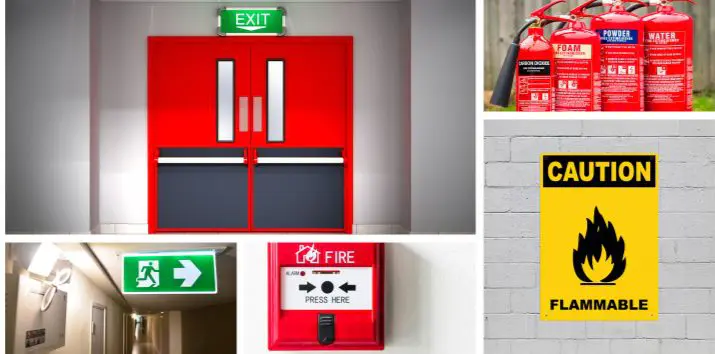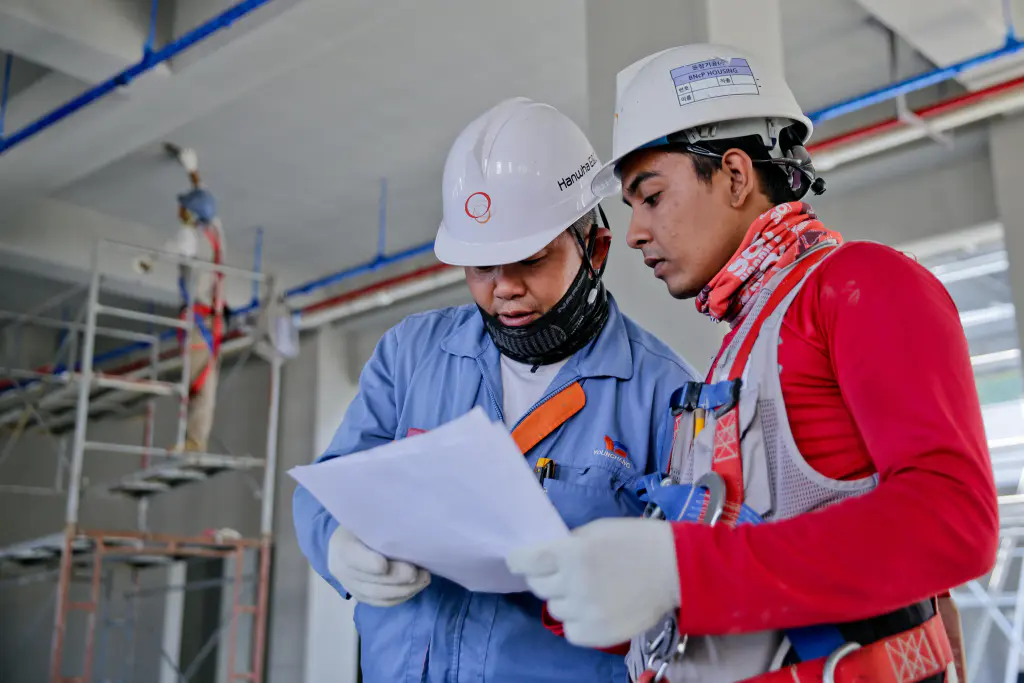Living in a flat should never be underestimated when it comes to fire safety, as the consequences can be dire. But when exactly is a fire risk assessment required for flats? Understanding this critical aspect is essential for ensuring the well-being of all residents.

Stay tuned to uncover the key triggers that necessitate a fire risk assessment in flats and discover the pivotal roles played by different stakeholders in maintaining a safe living environment.
Understanding Fire Risk Assessments
Understanding Fire Risk Assessments is a crucial step in ensuring the safety and compliance of residential flats and apartments with fire safety regulations. Common misconceptions about fire risk assessments include the belief that they’re only necessary for commercial premises. However, nearly all flats with common areas require assessments to identify potential fire hazards and ensure the safety of residents.
The assessment process involves a thorough examination of common areas for fire hazards, the need for fire alarm installations, and a review of fire doors and escape routes. Importantly, the importance of training can’t be overstated. Proper fire safety training enhances awareness, educates individuals on correct extinguisher use, and helps in developing effective evacuation plans.
Compliance guidelines dictate that fire risk assessments must be carried out regularly, especially after refurbishments or construction work, to maintain a safe living environment. Professional assistance from trained assessors, like those from companies such as Scutum South East, is recommended for comprehensive evaluations to meet fire safety legislation requirements effectively.
Legal Requirements for Flats

Moving from the discussion on fire risk assessments for flats, the legal requirements for ensuring fire safety in residential properties are mandated and strictly enforced to protect occupants and reduce fire risks. Fire safety in flats is governed by stringent building regulations that necessitate thorough risk evaluation through fire risk assessments. Property management plays a crucial role in ensuring safety compliance with these regulations, which are designed to safeguard residents in case of a fire emergency.
Compliance with legal requirements for fire safety in flats involves conducting regular fire risk assessments, documenting findings, and implementing necessary precautions in common areas. It’s essential for property owners, landlords, or managing agents to coordinate with responsible individuals to uphold safety standards. Ensuring adherence to these regulations not only mitigates fire risks but also demonstrates a commitment to maintaining a secure living environment for all occupants.
Who Is Responsible for Assessment?

Responsibility for conducting fire risk assessments in flats typically falls on the freeholder, landlord, property manager, or a nominated individual within the residential property. The individual responsible for arranging the assessment plays a crucial role in ensuring the safety of residents.
This person must coordinate with professionals to conduct a thorough assessment that identifies potential fire hazards and assesses the property’s overall fire safety measures. It’s essential that the responsible party understands the regulatory requirements and ensures compliance with fire safety legislation.
Tenants and leaseholders aren’t typically responsible for organizing these assessments but should cooperate with the individual overseeing the assessment process. By entrusting this responsibility to the freeholder, landlord, property manager, or a nominated person, the assessment can be carried out effectively, contributing to the overall fire safety of the residential property.
Elements of a Thorough Assessment
To conduct a thorough assessment of fire risks in residential flats, one must meticulously evaluate all potential hazards and safety measures in place. The importance of this assessment can’t be overstated, as it serves as a critical step in ensuring the safety of occupants and the property.
Common hazards that need to be identified include electrical faults, improper storage of flammable materials, compromised fire doors, and inadequate escape routes. Safety measures such as proper fire alarms, extinguishers, emergency lighting, and clear emergency planning are vital components of a comprehensive assessment.
Professional assistance in conducting these assessments can provide in-depth insight, ensuring all risks are identified and appropriate measures are implemented. The benefits of such assessments include risk identification, efficient emergency planning, and the regular review of safety protocols to maintain compliance with fire safety regulations.
Regular reviews and compliance maintenance are necessary to uphold the highest standards of fire safety in residential flats.
Tenant/Resident Access and Rights
In assessing fire risks in residential flats, understanding tenant/resident access and rights is crucial for ensuring compliance with fire safety regulations and promoting a safe living environment. Tenant communication plays a pivotal role in fostering a culture of safety within the building. Access rights enable tenants to participate in fire safety measures and be aware of emergency procedures.
Landlord obligations include providing clear information on fire safety protocols, conducting regular safety checks, and ensuring the maintenance of safety measures. Safety measures such as fire alarms, fire extinguishers, and well-maintained escape routes are essential components of fire risk assessments. Risk identification involves recognizing potential hazards within the property and taking proactive steps to mitigate these risks.
Frequently Asked Questions
Can Tenants Request a Copy of the Fire Risk Assessment Report for Their Flat?
As a tenant, I have the right to request a copy of the fire risk assessment report for my flat. Landlords must share this information upon my access request. Disclosure requirements ensure transparency while addressing any privacy concerns.
Are There Specific Guidelines for Fire Risk Assessments in High-Rise Buildings With Cladding?
In high-rise buildings with cladding, specific guidelines address safety measures, building materials, emergency exits, and risk management. Compliance with cladding regulations ensures fire safety. Regular assessments by professionals are recommended for comprehensive evaluations.
What Are the Consequences for Landlords Who Fail to Conduct a Fire Risk Assessment for Their Flats?
Failing to conduct a fire risk assessment for flats can result in severe penalties, legal consequences, enforcement action, and financial risks. Landlords must prioritize safety implications to avoid these repercussions and ensure compliance with regulations.
Are There Any Exemptions for Certain Types of Flats From Needing a Fire Risk Assessment?
I can provide insight into exemptions from fire risk assessments for flats. Understanding the exemption criteria, regulatory requirements, tenant rights, safety standards, and risk evaluation is crucial to ensure compliance with fire safety legislation.
How Often Should Fire Risk Assessments Be Reviewed and Updated for Flats?
Reviewing fire risk assessments for flats is crucial for safety. Regular updates, in line with legal requirements, enhance safety measures and mitigate risks effectively. Frequency review ensures compliance with regulations and proactive risk management.
Conclusion
In conclusion, fire risk assessments for flats are a crucial aspect of maintaining safety and compliance with regulations. Understanding the legal requirements, responsibilities of landlords, and tenants, and the elements of a comprehensive assessment is essential for ensuring the well-being of everyone in the building.
By prioritizing fire safety through regular assessments, individuals can create a secure living environment that adheres to the necessary regulatory standards. Stay informed, stay safe.









